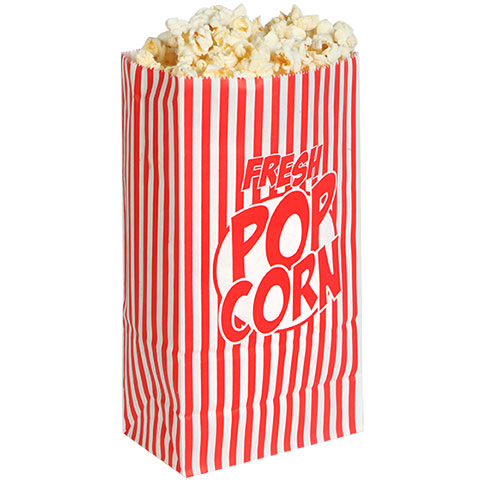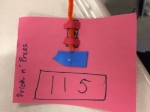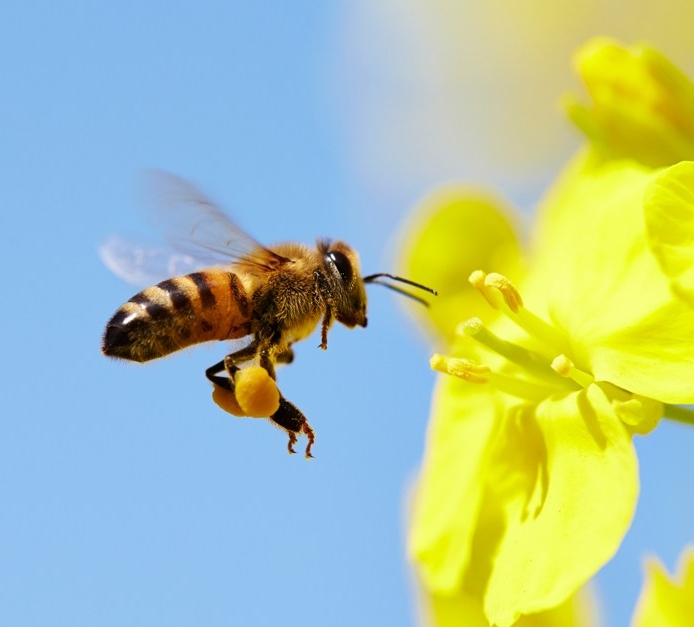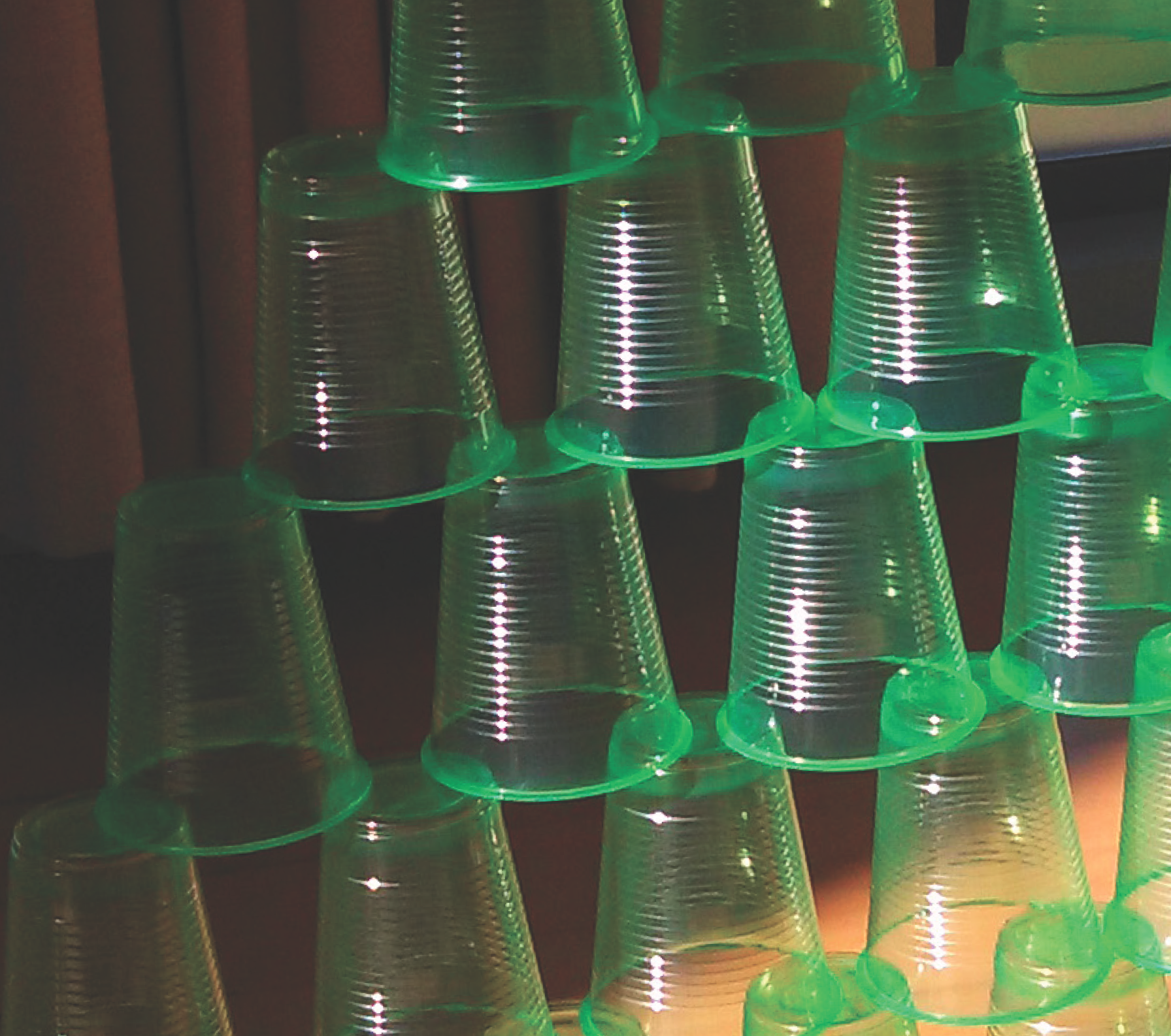Get creative and design #functionalfashion with free CAD programs
Leaf Chromatography
ESTIMATED COST:
$0.14
PER STUDENT
Required materials:
several leaves from different trees, small glass containers, rubbing alcohol, paper coffee filters, shallow aluminum pan, hot tap water, aluminum foil, scissors, tape, marker, sticky notes, plastic spoons
TED-Ed Description:
It's true that the cooler weather is a good indication that the seasons are changing, but there's no sign like the color of the leaves. In this lesson, you'll learn why leaves change color in the fall, and you'll learn how to do paper chromatography to separate the pigments found in a leaf.
NGSS alignment:
1. Asking questions (for science) and defining problems (for engineering) 3. Planning and carrying out investigations 6. Constructing explanations (for science) and designing solutions (for engineering) 7. Engaging in argument from evidence 8. Obtaining, evaluating, and communicating information
Tech in a Bag
Required materials:
household or classroom items, i.e. plastic snack bags, sticky notes, toothpaste, pair of scissors, markers, pencils, etc. within a paper lunch bag
Description:
Many students believe that technology only refers to things powered by electricity. In this lesson, each group of students gets a “mystery bag” containing an example of technology. When students open their bags, they may be surprised to see that they contain everyday objects like sponges, slippers, or bubblegum! (eie.org)
Tips:
Nothing necessarily needs to be bought for this lesson except possibly the paper bags. Many household or classroom items that you already have will work for this activity and can be reused multiple times. Items listed here have already been tested with students as a part of this lesson. My favorite items to use come from the kitchen: Cyclone by Quirky, a spork, gloves, recipe cards, etc.
1. Asking questions (for science) and defining problems (for engineering) 6. Constructing explanations (for science) and designing solutions (for engineering) 7. Engaging in argument from evidence 8. Obtaining, evaluating, and communicating information
Adaptive Design Challenge
Suggested materials:
craft materials, i.e. masking (or scotch tape), string, chenille stems (pipe cleaners), markers, toothpicks, fastener strip (Velcro), construction paper
Description:
According to TryEngineering.org, engineers have developed products that help those with physical challenges lead more comfortable and independent lives. As shown in the videos below, adaptive designs not only help those in need, adaptive designs help everyone and make life better for all!
Tips:
Many craft, household or classroom items that you already have will work for this activity and can possibly be reused. Items listed here have already been tested with students as a part of this lesson. Students should be given access to as many or as few materials as you can afford. Allow students to be creative. I've done this activity with only toothpicks, markers and construction paper!
1. Asking questions (for science) and defining problems (for engineering) 2. Developing and using models 6. Constructing explanations (for science) and designing solutions (for engineering) 8. Obtaining, evaluating, and communicating information
Paper Airplanes: Real-Life Algorithms
ESTIMATED COST:
$0.08
PER STUDENT
Required materials:
paper, scissors, glue
Code.org Description:
This lesson calls out ways we use algorithms in our daily lives, specifically making paper airplanes. This lesson also focuses on the bigger picture of computer science and how algorithms play an essential part.
NGSS alignment:
2. Developing and using models 4. Analyzing and interpreting data 5. Using mathematics and computational thinking 8. Obtaining, evaluating, and communicating information
All the Buzz for Bees
ESTIMATED COST:
$0.13
PER STUDENT
Recommended materials:
game pieces, plastic cups, dice/die, dry erase board with marker (optional)
Description:
This lesson helps learners understand how genes and environment affect animal behavior of the almighty yet vanishing honeybee.
Tips:
Materials don't necessarily have to be purchased new for this activity. Household or classroom items that you already have can be used (i.e. math manipulatives for the game pieces or substitute the dry erase board with pen and paper).
NGSS alignment:
1. Asking questions (for science) and defining problems (for engineering) 2. Developing and using models 3. Planning and carrying out investigations 4. Analyzing and interpreting data 5. Using mathematics and computational thinking 6. Constructing explanations (for science) and designing solutions (for engineering) 7. Engaging in argument from evidence 8. Obtaining, evaluating, and communicating information
Graph Paper Programming
ESTIMATED COST:
$0.08
PER STUDENT
Required materials:
paper, markers, glue
Code.org Description:
This lesson calls out ways we use algorithms in our daily lives, specifically making paper airplanes. This lesson also focuses on the bigger picture of computer science and how algorithms play an essential part.
NGSS alignment:
2. Developing and using models 4. Analyzing and interpreting data 5. Using mathematics and computational thinking 8. Obtaining, evaluating, and communicating information
Muscle Models
ESTIMATED COST:
$0.07
PER STUDENT
Required materials:
rubber bands, craft sticks, straws, metal brads, ruler, metal paper clip
Description:
Humans have 600+ muscles but only a set number of muscle fiber at birth. These fibers can increase in strength and size with exercise. In these lessons, students can learn the cellular mechanisms that lead to muscle growth as well as create and test models of muscle fiberss.
NGSS alignment:
1. Asking questions (for science) and defining problems (for engineering) 2. Developing and using models 3. Planning and carrying out investigations 4. Analyzing and interpreting data 5. Using mathematics and computational thinking 6. Constructing explanations (for science) and designing solutions (for engineering) 7. Engaging in argument from evidence 8. Obtaining, evaluating, and communicating information
Electrifying STEM: Circuits and Batteries
ESTIMATED COST:
$0.07
PER STUDENT
Required materials:
"switches," wire strippers, insulated wire, flashlight, lightbulbs, batteries, electrical tape
Description:
TED-Ed calls batteries a "triumph of science." They allow electronics to operate "without anchoring us to an infernal tangle of power cables." The activities above take learners from simple circuits to an electrifying design challenge.
Tips:
Scissors may be used instead of wire strippers, but may take extra practice to strip the wire. Select a flashlight that can be easily disassembled so that the lightbulb can be removed. Also, replacing flashlights with lightbulbs may be more cost effective.
NGSS alignment:
1. Asking questions (for science) and defining problems (for engineering) 2. Developing and using models 6. Constructing explanations (for science) and designing solutions (for engineering) 8. Obtaining, evaluating, and communicating information
Pixel Perfect Low-tech Comp Sci
ESTIMATED COST:
$0.08
PER STUDENT
Required materials:
markers and graph paper (or index cards and a ruler)
Description:
This low-tech offline lesson plan covers the basics of computer graphics. After learning about how graphics work, students will create their own Color by Pixel programs.
Tips:
If graph paper is difficult to find, create the grids on index cards with a ruler. For a high-tech extension of this lesson, click here.
NGSS alignment:
2. Developing and using models 3. Planning and carrying out investigations 4. Analyzing and interpreting data 5. Using mathematics and computational thinking 8. Obtaining, evaluating, and communicating information
Low-tech Comp Sci: Robot Friends
Required materials:
paper, markers, cups
Description:
This computer science lesson is a great low-tech introduction to coding. My Robotic Friends teaches students the connection between symbols and actions, as well as the valuable skill of debugging. Using a predefined “Robot Vocabulary,” students will figure out how to guide one another to accomplish specific tasks without discussing them first.
Tips:
The lesson plan has great adjustments for lower elementary, upper elementary and grades 7+.
NGSS alignment:
2. Developing and using models 4. Analyzing and interpreting data 5. Using mathematics and computational thinking 8. Obtaining, evaluating, and communicating information
Parts Per Million Activity
ESTIMATED COST:
$0.27
PER STUDENT
Required materials:
eyedropper, water, graduated cylinder (10 mL graduations), clear plastic cups, markers, food coloring
Description:
“Parts per million” is a scientific unit of measurement that counts the number of units of one substance per one million units of another. But because it’s hard to conceptualize really large numbers, it can be difficult to wrap our brains around what “one part per million” really means. Kim Preshoff (with help from 100+ animators from the TED-Ed Community) shares nine helpful ways to visualize it. Take this concept further with your choice (or both!) of the two lessons above.
Tips:
The Rutgers Engineering Planet lesson plan calls for masking tape, but the cup itself can be labeled with a permanent marker. For the Country Club Ichthycide Lab, egg platters can substitute the Chemplates. The more affordable option is to use cups, so it is up to the teacher's discretion whether to use cups or the platters/Chemplates. Also, the eyedropper can be substituted by an empty food coloring bottle.
NGSS alignment:
1. Asking questions (for science) and defining problems (for engineering) 4. Analyzing and interpreting data 5. Using mathematics and computational thinking 6. Constructing explanations (for science) and designing solutions (for engineering) 8. Obtaining, evaluating, and communicating information
Functional Fashion Challenge
ESTIMATED COST:
$0
PER STUDENT*
Required materials:
Any free CAD software i.e. Autodesk Inventor (free student version) or Morphi*
Description:
Design challenges provide opportunities to apply skills and knowledge in unique and creative ways. Designers are often asked to create or innovate products that solve complex problems, yet address aesthetic requirements to make the product as profitable as possible. As you will discover with this challenge, designers sometimes have to embody the role of engineers and artists to ensure all solutions also are aesthetically pleasing and creative enough to serve multiple purposes.
Tips*:
No materials are needed for this project except the teacher's choice of CAD software and one compatible computer per 1-2 students. Basic craft materials can be used to prototype students' physical designs or elevate the activity by 3D printing the prototypes.
1. Asking questions (for science) and defining problems (for engineering) 2. Developing and using models 6. Constructing explanations (for science) and designing solutions (for engineering) 8. Obtaining, evaluating, and communicating information
Sink, Float, Hover Challenge
ESTIMATED COST:
$0.05
PER STUDENT
Required materials:
small containers with lids (film canisters work best), variety of small, heavy objects (coins, washers, marbles, etc.), variety of small, lightweight objects (corks, beads, Styrofoam, etc.), rubber bands (optional to keep lid on canisters or modify distribution of mass), and large containers of water
Description:
Students will learn about density, buoyancy, and how submarines dive. Students will design and create a vessel that is able to sink, hover, and float.
Tips:
Many craft, household or classroom items that you already have will work for this activity and can possibly be reused. Items listed here have already been tested with students as a part of this lesson. Students should be given access to as many or as few materials as you can afford. This allows students to be more creative.
1. Asking questions (for science) and defining problems (for engineering) 2. Developing and using models 3. Planning and carrying out investigations 4. Analyzing and interpreting data 6. Constructing explanations (for science) and designing solutions (for engineering) 8. Obtaining, evaluating, and communicating information
Pepsi v. Coke (or Aquafina v. Dasani) Experiment
Required materials:
paper drinking cups, Pepsi and Coke (or Aquafina and Dasani)
Description:
Does gender actually affect your ability to taste? Can girls taste the difference between Pepsi and Coke better than boys? These may seem like silly questions, but they can be used to provide an introduction to designing scientific experiments. In this lesson, students will learn what experimental design is, as well as design and complete their own scientific experiment.
3. Planning and carrying out investigations 4. Analyzing and interpreting data 5. Using mathematics and computational thinking
On Target Challenge
Estimated cost:
$0.10
per student
Required materials:
zip line (wire or fishing line), index card, marbles, masking tape, paper clips, paper cups, scissors, a Target (can be drawn on a piece of paper)
Description:
This activity turns a paper cup into something that can zip down a line and drop a marble onto a target. Just as the success of NASA's LCROSS (Lunar Crater Observation and Sensing Satellite) depends on hitting the crater exactly, success in this activity depends on being able to hit the target accurately and consistently. As students test their designs, encourage them to find ways to make it work better.
Tips:
A few of the items needed for this activity are reusable or can be replaced by classroom or household items you already have, saving you even more money!
2. Developing and using models 3. Planning and carrying out investigations
The Marshmallow Challenge
ESTIMATED COST =
$0.07
per student
Required materials:
spaghetti, string, marshmallow, masking tape, paper lunch bag (optional)
Description:
The Marshmallow Challenge is a remarkably fun and instructive design exercise that encourages teams to experience simple but profound lessons in collaboration, innovation and creativity. The task is simple: in eighteen minutes, teams must build the tallest free-standing structure out of 20 sticks of spaghetti, one yard of tape, one yard of string and one marshmallow. The marshmallow needs to be on top. (http://marshmallowchallenge.com/)
1. Asking questions (for science) and defining problems (for engineering) 6. Constructing explanations (for science) and designing solutions (for engineering)


















